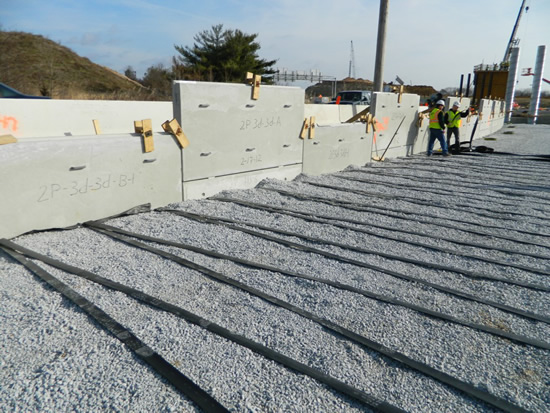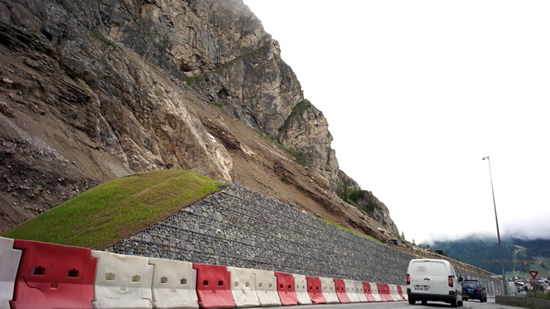Mechanically stabilized earth walls have been the subject of the most read stories on Geosynthetica this year and a few of the most read stories in 2016 as well. This past spring, some of that field interest in MSE design became the focus of a unique meeting at the Geotechnical Frontiers 2017 conference. There, the ASCE Geo-Institute Technical Committee on Geosynthetics brought together leading MSE experts in the field to provide big pictures lectures and foster discussion on three major MSE design frameworks: limit equilibrium, K-stiffness, and AASHTO/FHWA.
Listen to “Dr. Jorge Zornberg on Current MSE Wall Design Frameworks” on Spreaker.
I sat down with Dr. Jorge Zornberg of the University of Texas at Austin and Immediate Past President of the International Geosynthetics Society to discuss the outcome of this meeting.
GeoTalk is published on Tuesdays. Recent episodes:
- July 18: George Koerner on Exposed Geomembrane Performance
- July 11: Pullout Anchor Testing in Erosion and Sediment Control
- July 5:Effective Education for Erosion and Sediment Control System Adoption
- June 27: Leap Frog Ideas for Low Impact Development
- June 20: The Geotechnical Poetry of Mary Nodine
- June 13: Robert Bowers on Geosynthetics in Segmental Concrete Pavements
- June 6: Craig Benson on Sedimentation, Dams, and Watershed Health
Subscribe on iTunes and in the Google Play store.
MSE DESIGN FRAMEWORKS
Failures of MSE wall systems are rare, but when they occur they raise unique questions. Data suggests that MSE structures are in general overly conservative in their design—at least from the perspective of typical conditions. Atypical events (e.g., heavy precipitation, earthquakes, etc.) can reveal risks that some frameworks have not properly accounted for. Or, a construction practice that actually exposes a wall to failure risk may not be apparent in the system until well after construction has been completed.

How an engineer approaches these concerns can vary tremendous depending on the design framework being utilized. In the case of the meeting in Orlando, engineers were looking specifically as limit equilibrium, K-stiffness, and AASHTO/FHWA.
“No method is perfect,” Zornberg says. “All methods have advantages, all methods have disadvantages. At this point, you can design a geosynthetic-reinforced wall following one of three reasonably different methods.”
On the differences between these design frameworks, Dr. Zornberg discusses assumptions you make in approaching design.
“What is the output that you expect?” he asks. “What is the philosophy? What is the ultimate collapse or loads at collapse of the structure? … What are the working stresses?”

The Geo-Institute’s TC-Geosynthetics is not recommending one framework over another. Rather, it is a process of evaluation and questioning with a mind to continue making the geotechnical engineering field stronger, not just for the next year’s design but the designs we will put forth in 25 years and with consideration of all the structures we want to see still in service long beyond that.
Learn more about the Geo-Institute’s committees, events, and technical resources available to its 11,500+ members at the G-I website.
**
Have a topic or speaker you’d to like hear on the GeoTalk Podcast? Contact Chris Kelsey, chris@geosynthetica.net.











